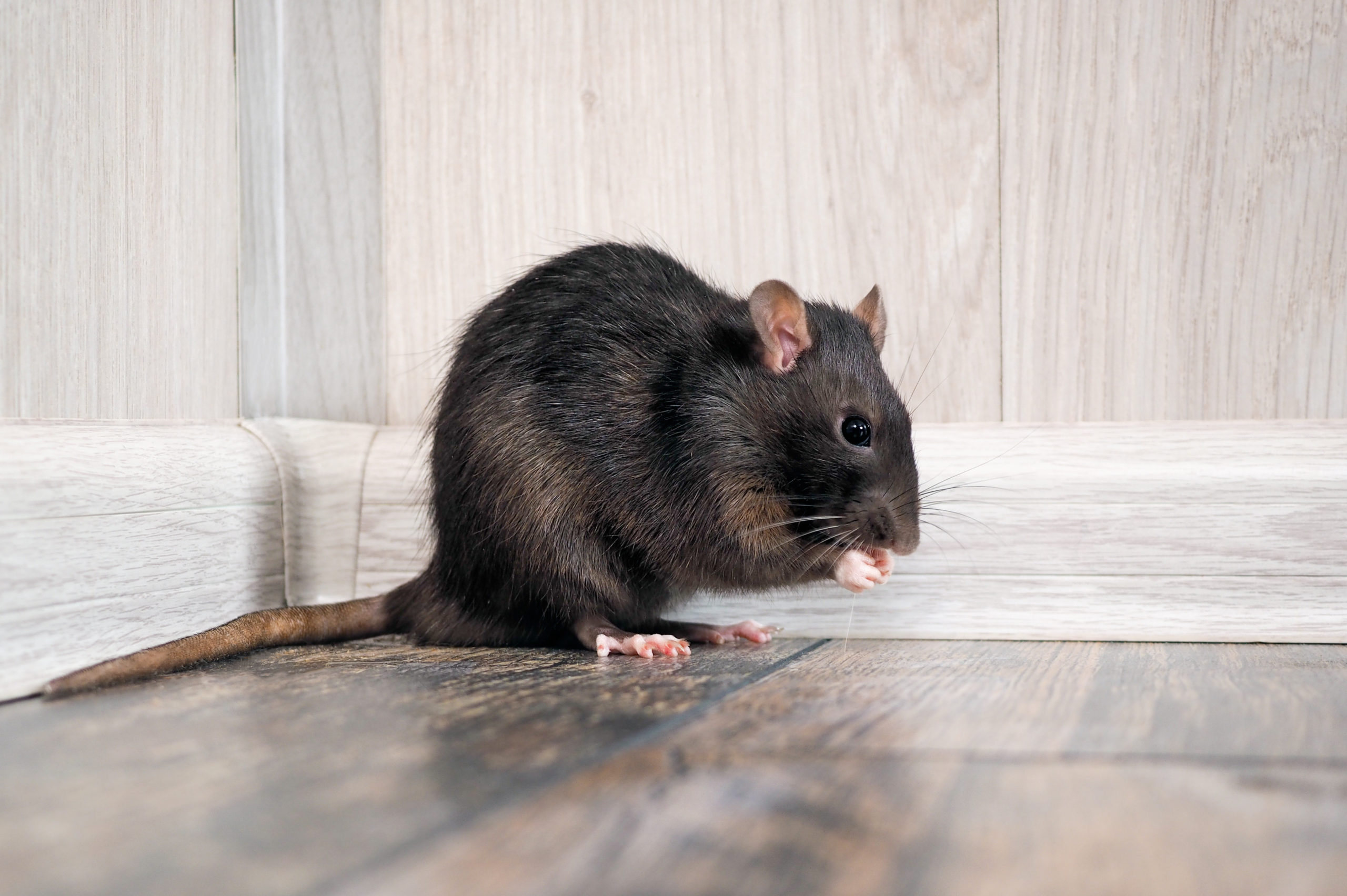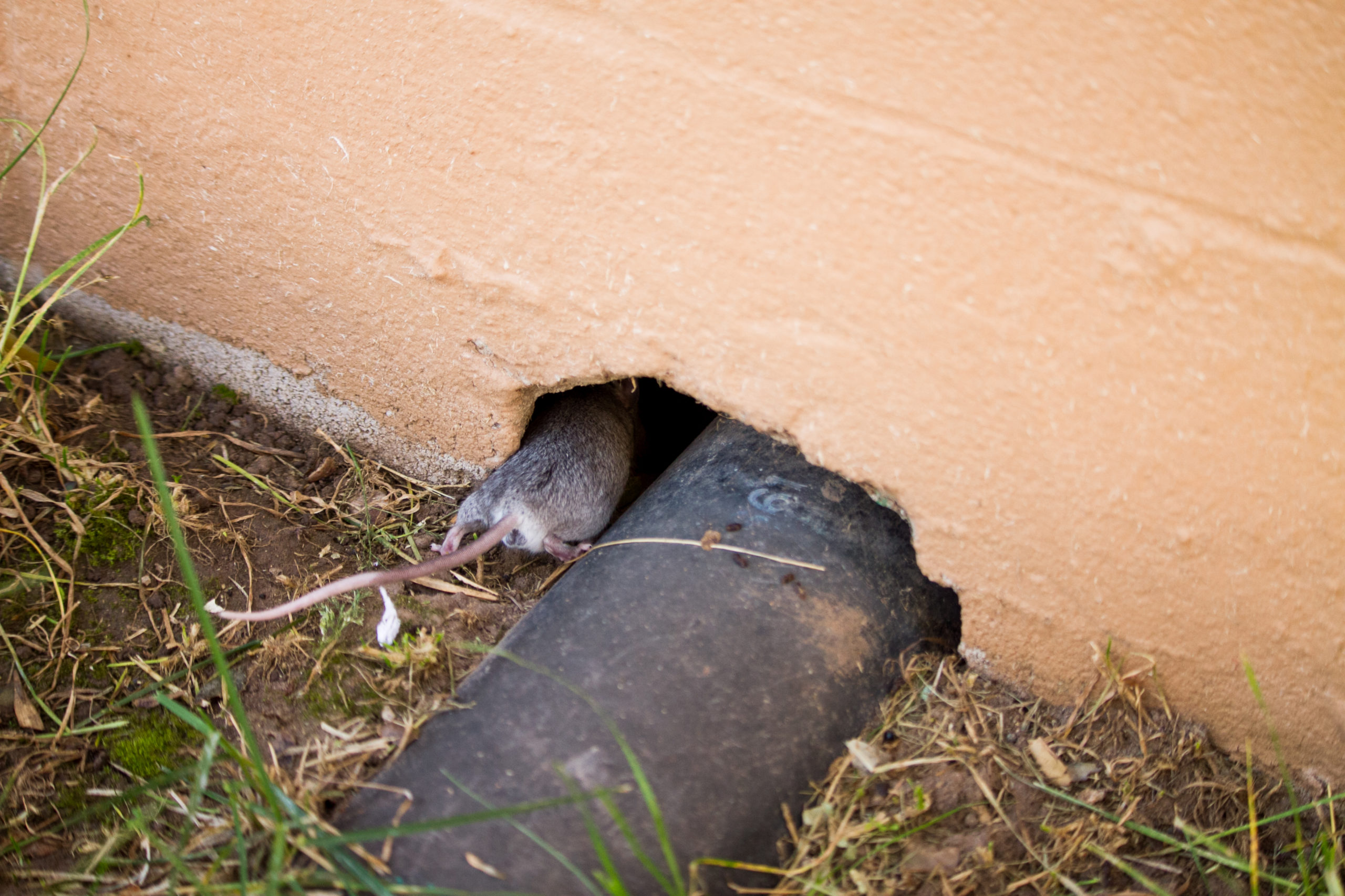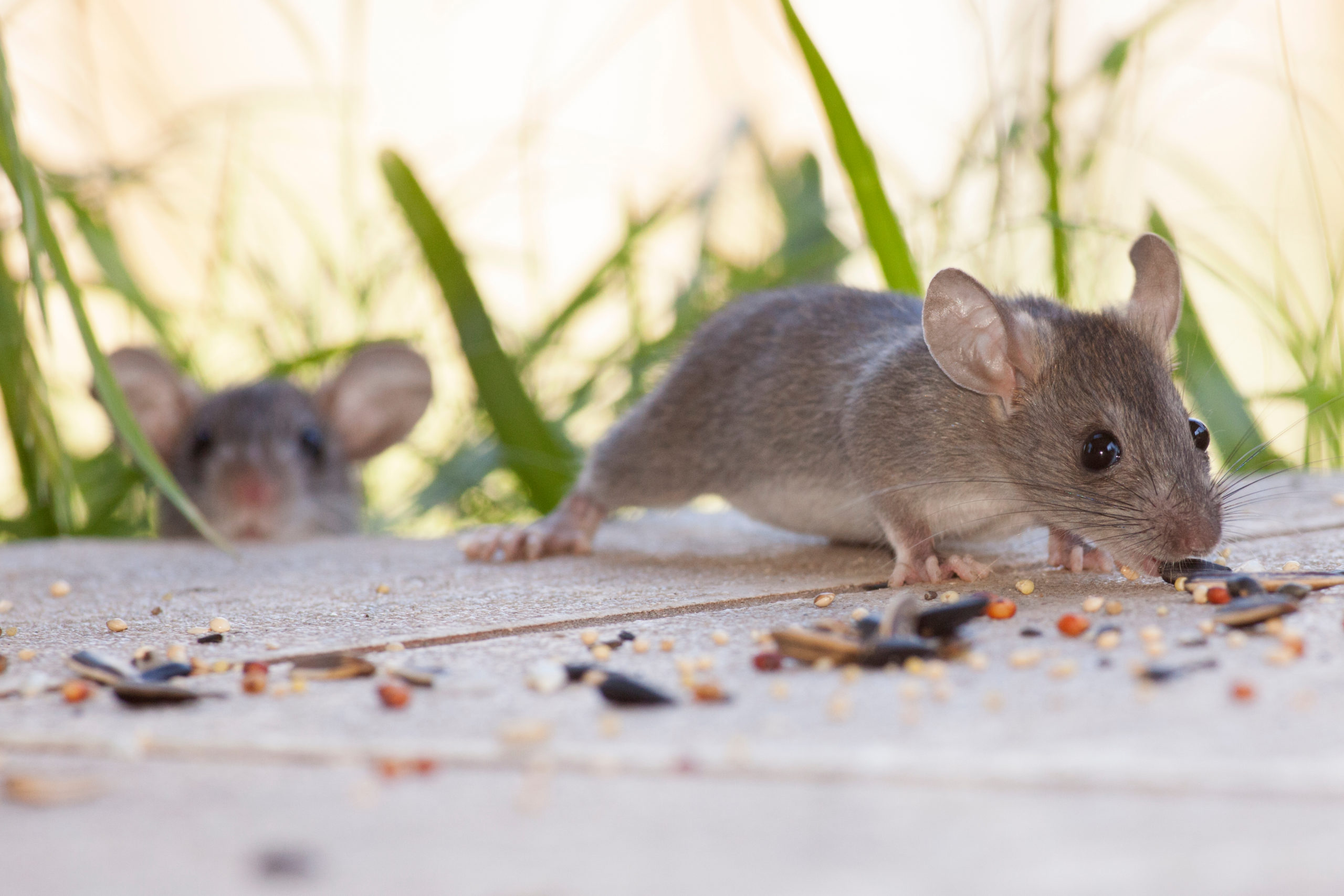Inspecting for Rodents
Inspecting for Rodents
So, You Think You Have Rodents?
There are many different indicators of rodents in a home, the most obvious of which is seeing the actual rodents themselves. But as both wild mice and rats prefer not to interact with people, this is less likely to happen until after the problem has festered for quite some time. Some telltale earlier signs pointing to an infestation include:
- Tiny droppings
- Noises – Scratching, rustling, scurrying and even squeaking
- Chew holes in your walls or moldings
- Remnants of nests such as paper or leaves
- Urine smell (ammonia)
- Disturbed insulation
- Stolen or torn open food
- Overall musky odors
- Random smudge marks or stains around the home
If you notice any of these potential signs of rodents, it’s important to schedule a professional rodent inspection as soon as possible. Rodents can be extremely dangerous pests between the horrific diseases they can carry and spread, and the massive home destruction they can cause. When you call our rodent experts, these are the steps we will take in your rodent inspection.

Identifying the Rodents
The kind of rodents that are invading your home can determine what different treatment methods we use and how we tackle the infestation. In Virginia, the most common rodents that infest homes include Norway rats, roof rats, deer mice, and house mice.
Norway Rats – Norway rats are omnivorous creatures and will eat anything they can get their hands on, including other rodents. They measure about 1.5 pounds and can reach up to 21 cm long. Their tails and ears are scaly, while the rest of their body is covered in hair varying from gray to brown. These rats will hardly ever come out during the day and prefer to do most of their food hunting at night when the house is quiet, and everyone is asleep.
Roof Rats – Smaller than their fellow rats the Norway rats, roof rats are brownish/black in color with long thin tails and large ears. These rodents were originally referred to as black rats or ship rats, but soon became known by their new name due to their tendency to inhabit upper areas of buildings.
Deer Mice – Deer mice have brownish-reddish hair covered all over their body with an underbelly and feet that are white. They grow to be about 7-10 cm long with a tail that can grow up to 13 cm long. These mice are usually found in tree holes or under piles outdoors and try their best to stay away from humans.
House Mice – House mice are small ranging from 7.5 cm to 10 cm long. They range from light brown to gray with fur covering their entire body. They are quick on their feet and will usually nest in hard-to-reach areas that have low traffic.

Finding the Nest
While it’s not always possible to locate the nest as they can often be very well hidden within walls, ceilings, etc., it is very important to identify the areas with the most rodent traffic. These areas are often right near the nest itself, their entryway into the home, and/or an attractant that is drawing the rodents inside.
If the nest can be located, we will target the area with our abatement treatments to stop the rodents at the root of the problem.

Searching for Entry Points
Unfortunately, rodents are experts at accessing homes using even the smallest of cracks and gaps. Rats can squeeze through holes as small as a quarter while adolescent mice can squeeze into holes as small as a pencil eraser. This amazing ability to move through such tiny openings is due to the fact that their heads are the largest parts of their bodies. So, anywhere their heads can fit, so can their entire bodies.
Once we identify entry points, we can help temporarily seal any of the voids that are smaller than an apple to help reduce the influx of rodents in the home as well as placing targeted traps in these areas. If the entryway is larger than an apple, we can help with recommendations on how to get the area sealed.

Identifying Any Attractants
Our homes are warm, sheltered, and provide access to food and water, making them a haven for rodent invaders. However, these conditions alone don’t always lead to infestations. So, if rodents are targeting your home, your technician will try to help you identify any conducive conditions or attractants that are leading to the rodent invasion. The following are some of the most common attractants/conducive conditions:
- Food – food left out on counters, dirty dishes in the sink, unsealed garbage cans with food waste, unsealed or improperly sealed food in pantry, crumbs or spills on the ground
- Birdseed – birdseed that collects on your deck, patio, lawn, etc.
- Garbage/Dumpsters – If you have an open garbage can near your home, it can draw rats in for a tasty dumpster treat. Make sure your garbage cans have lids and that they are not stored directly next to the siding of your home, this will discourage rats form attempting to enter your home after exploring your trash bins.
- Compost Bins – Similar to garbage bins, you will want to be sure any compost is covered and kept away from the side of your home.
- Dirty Garbage Cans – Some garbage cans do not have liners, and even ones that do, sometimes the bags/liners tear or leak, causing a collection of potentially sticky, smelly, and rotting residue. It is important to occasionally clean out garbage bins, especially those that contained food in order to avoid rancid buildups.
- Dog Poop – Disgustingly, dog poop is actually a major food source for rats. Canine feces is only 60% digested leaving rodents a great food source full ofvitamins… including the antidote to the anticoagulant poison in our bait blocks: Vitamin K. Take care to remove your pup’s droppings from your yard. Taking this measure will both help prevent the attraction of more rats to your home and prevent the consumption of the droppings counteracting the anticoagulant bait blocks we use in our rodent stations.
- Excessive Moisture – leaking pipes, clogged drains, or areas with collected moisture. Fixing these piping problems and/or installing dehumidifiers can reduce this attractant for rodents.
- Tree Branches – Tree branches, overgrown shrubs, etc. can all act as highways for rodents leading them straight from your yard onto your roof, up to your windows, and into your home.

Other Things We Try to Determine
The aforementioned steps are the most important for rodent inspections, but your technician will often also try to determine the following:
How Long the Rodent Issue has Existed – The length of time an infestation has been going on can determine how extensive the infestation can truly be. Rodents that have been allowed to fester for a while will have most likely accessed far more areas of the home, wreaking more havoc/damage and could even have multiple nesting sites.
The Size of the Rodent Population – The level of infestation we are dealing with can change the methods we use to combat the rodents as well as altering how often we treat.

Our Rodent Control Services
Rodent infestations are quite common and if you have never experienced one, count yourself lucky. Statistically, the odds are against you because each year an estimated 21 million homes experience a rodent invasion. At the onset of an infestation, determining the above characteristics of the infestation itself determines how we treat the problem in order to be the most effective. At Green Pest Services, we have highly trained and experienced technicians that can both stop rodents in their tracks, removing them from your home, and prevent any future infestations from ever happening. Call us today if you need a rodent inspection!

8 Creative Ways to Have a Pest-Free Fourth of July
8 Creative Ways to Have a Pest-Free Fourth of July 8 Creative Ways to Have a Pest-Free Fourth of July Summary: The Fourth [...]
A Simple Guide to Preventing Stinging Pests
A Simple Guide to Preventing Stinging Pests A Simple Guide to Preventing Stinging Pests Summary: Stinging insects are more active in warm weather, [...]
These 10 Natural Mosquito Repellents Can Actually Help
These 10 Natural Mosquito Repellents Can Actually Help These 10 Natural Mosquito Repellents Can Actually Help Summary: Natural mosquito repellents are easier to [...]
How to Get Rid of Carpet Beetles
How to Get Rid of Carpet Beetles How to Get Rid of Carpet Beetles Summary: Carpet beetles are sneaky pests that don’t usually [...]
How Do Roaches Affect Asthma and Allergies?
How Do Roaches Affect Asthma and Allergies? How Do Roaches Affect Asthma and Allergies? Summary: It’s no secret that pests impact human health, [...]
These 5 Carnivorous Pests Might Surprise You!
These 5 Carnivorous Pests Might Surprise You! These 5 Carnivorous Pests Might Surprise You! Summary: There are many eco-friendly ways to prevent pests, [...]

